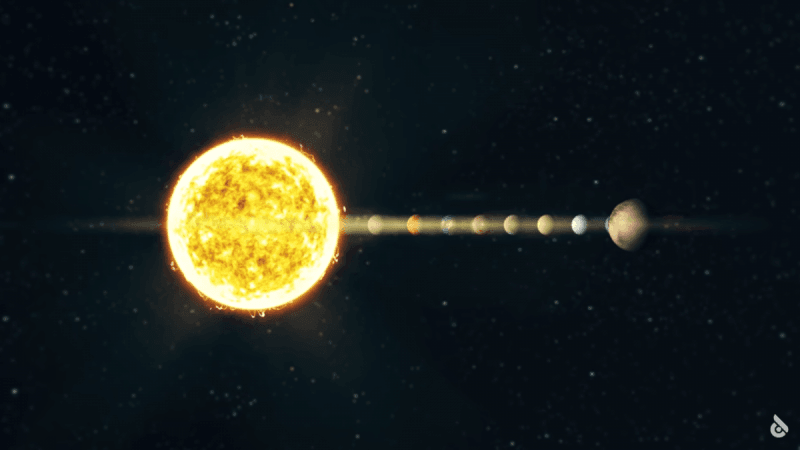Numerous planets have been discovered orbiting other stars, but scientists have found a new planet that is believed to have been one of the youngest ever identified. The newborn planet has been given the identity 2M0437b.
This discovery was made by an international team of scientists led by academics, students, and alumni of the University of Hawaii at Manoa. The detailed research was just published in the Royal Astronomical Society's Monthly Notices.

2M0437b planet
Dr Eric Gaidos, main author and UH Manoa Department of Earth Sciences professor, said the finding was made by chance. This planet's light can tell us about its composition, and maybe where and how it originated in a long-gone disc of gas and dust around its home star.
Gaidos and his team utilised Maunakea's Keck Observatory to track the host star's location, establishing that planet 2M0437b was a close companion to the star. The star travels slowly across the sky, thus measurements took three years.
A few million years ago, about the time the major Hawaiian Islands initially appeared well above the ocean, the planet originated with its star. The planet is so young that the energy unleashed during formation still keeps it hot, like the lava spilling from Klauea Volcano. The planet and its parent star reside in the Taurus Cloud.
Gaidos said that observations with space observatories like NASA's Hubble and the upcoming James Webb Space Telescope might show gases in its atmosphere and whether it has a Moon-forming disc.
This revelation sheds new information on the Solar System's and Earth's origins.

Other recently discovered planets
NASA's Jet Propulsion Laboratory and the University of New Mexico discovered the planet TOI-1231b. It is located 90 light-years from Earth.
NASA found TOI-1231 b, an exoplanet circling an M dwarf (red dwarf). As one of the coldest tiny exoplanets identified so far, its atmosphere is around 330 Kelvin (56.85 degrees Celsius). NASA scientists believe TOI1231b has thick hydrogen or hydrogen-helium environment.
Each one of these would help astronomers understand how planets orbiting M dwarfs vary from planets near our Sun.
Another new planet was found later. HD110113 c is a Neptune-like exoplanet. It is 347.8 light-years (106.6 pc) from our Solar System.
Scientists discovered HD 110113 b with a radius of 2.05 R and a mass of 4.55 M using TESS photometry and HARPS radial velocities from the NCORES programme. Extrasolar planet HD 110113 c circles the star HD 110113 every 6.7 days at a distance of 0.07 AU ( 10172655.2 km).

















